IT Service Management (ITSM) is a concept that involves delivery of IT services to customers and users. Most IT services are centered around technology and the support and maintenance activities that must occur to operate and maintain the technology. The ServiceNow ITSM Implementation course puts those basic capabilities to use. It provides practical skills that may be applied immediately to accelerate ITSM implementations.
This course aligns with common and practical implementation scenarios and challenges when configuring a ServiceNow instance for implementation, using a low-code or no-code approach.
This course focuses on the baseline capabilities, security, and architecture of these ITSM applications and processes:
- Incident Management
- Problem Management
- Change Management
- Service Catalog and Request Management
- Service Portfolio Management
Information on Configuration Management (including Common Service Data Model) and Release Management, and how they are used to support the ITSM applications listed above, is also provided.
ServiceNow ITSM Implementation Course Delivery Methods
ServiceNow ITSM Implementation Course Information
In this course you will:
- Accelerate delivery of IT services to customers and users with IT Service Management best practices
- Apply practical skills for ITSM implementations
- Use a low-code or no-code approach for ServiceNow configuration
- Focus on baseline capabilities, security, and architecture
- Understand Configuration Management and Release Management
Prerequisites:
Recommended Experience
- Familiarity with navigating through ServiceNow
- ServiceNow user interface (UI), iconography, and user settings
- Integrations
- List management
- Platform security model that explains how ServiceNow roles determine what a user can access, create, update, and delete.
- ServiceNow platform implementation
- ServiceNow system administration
Certification Information
Upon completion of this course, the candidate will be granted access to the voucher for the Certified
Implementation Specialist in ITSM (CIS-ITSM) exam.
ServiceNow ITSM Implementation Course Outline
Module 1: Overview and Foundation Data
Objectives
- Review basic concepts needed to be successful in this course
- Outline resources to supplement efforts to learn how to implement ITSM in ServiceNow
- Introduce the course framework and approach
- Identify foundation data leveraged by ITSM applications
Labs and activities:
- 1.5.1 - Locate student resources such as Now Create, the credentialing path, and user stories for course labs
Module 2: CMDB and CSDM
Objectives
- Identify baseline application functionality, security, and architecture
- Discuss uses of Configuration Management data within ITSM applications
- Understand the CSDM 4.0 structure and purpose
Labs and activities:
- 2.1.1 – Create a CMDB class with attributes (Optional)
- 2.1.2 – Configure and import CIs (Optional)
Module 3: Service Portfolio Management
Objectives
- Discuss an overview of Service Portfolio Management features available in the ITSM Standard package
- Review the SPM user and organizational roles
- Understand the components of a Service Portfolio in the Now Platform
- Review Digital Portfolio Management (DPM), including the DPM Workspace
Labs and activities:
- 3.5.1 - Create a service portfolio taxonomy
Module 4: Service Catalog and Request Management
Objectives
- Identify baseline application functionality, security, and architecture
- Design solutions to meet requirements that maximize system quality attributes
- Implement configurations common to 80% of customer deployments
Labs and activities:
- 4.3.1 – Create a service catalog
- 4.3.2 – Create a catalog item
- 4.3.3 – Create an order guide (Optional)
- 4.4.1 – Create a dynamic flow
- 4.4.2 – Fulfillment in Catalog Builder
- 4.4.3 – Catalog items and service offerings
- 4.5.1 – Configure an Employee Center taxonomy
- 4.5.2 – Service catalog access
Module 5: Incident Management
Objectives
- Identify baseline application functionality, security, and architecture
- Design solutions to meet requirements that maximize system quality attributes
- Implement configurations common to 80% of customer deployments
Labs and activities:
- Lab 5.3.1 – Configure incident entry points
- Lab 5.4.1 – Configure SLAs




